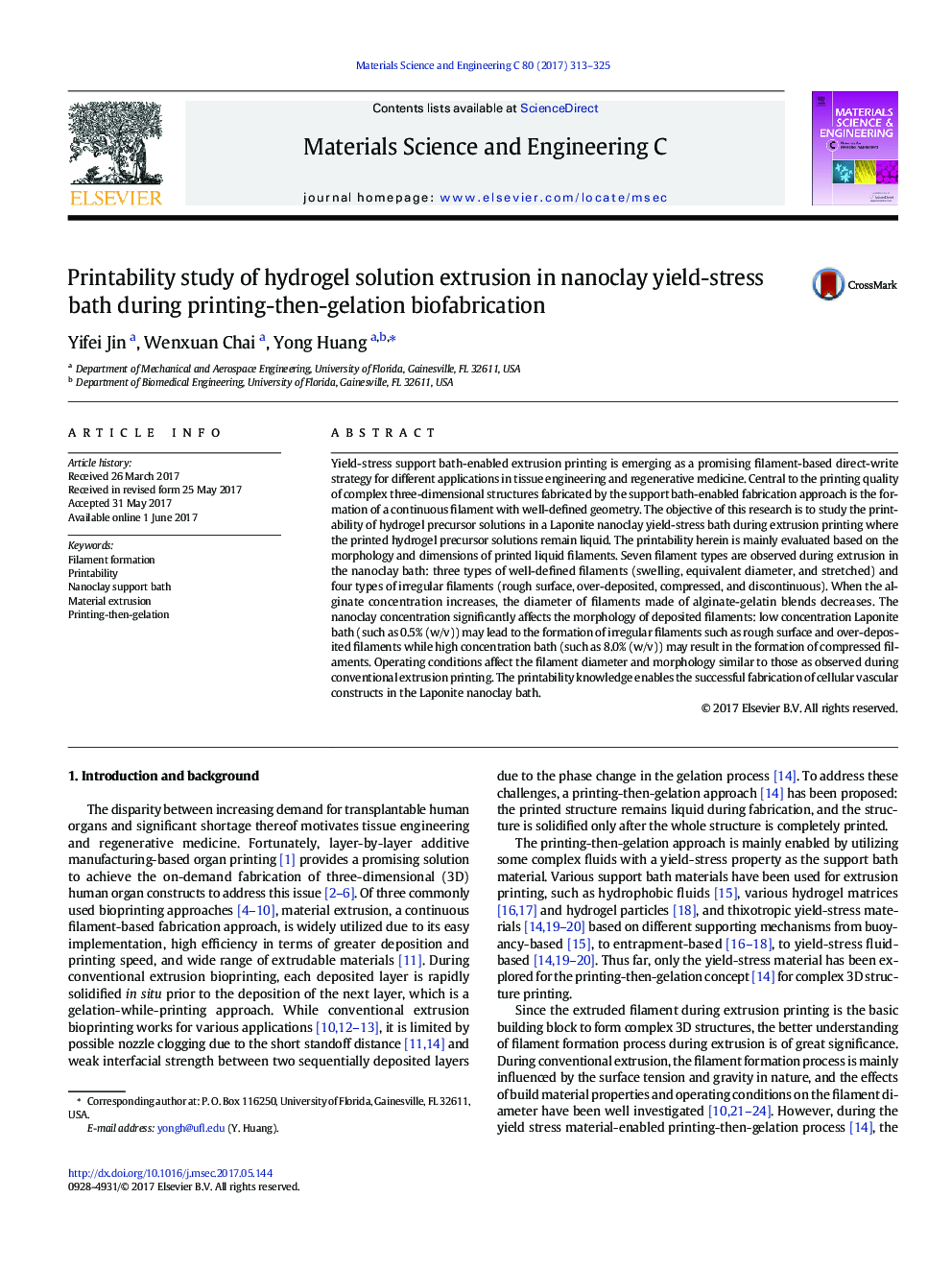| کد مقاله | کد نشریه | سال انتشار | مقاله انگلیسی | نسخه تمام متن |
|---|---|---|---|---|
| 5434324 | 1509141 | 2017 | 13 صفحه PDF | دانلود رایگان |
- During yield-stress support bath-enabled extrusion, each deposited hydrogel precursor filament remains liquid.
- Printability in the Laponite nanoclay yield-stress bath is studied based on the liquid filament morphology and dimensions.
- Seven filament types are observed during extrusion in the Laponite nanoclay bath.
Yield-stress support bath-enabled extrusion printing is emerging as a promising filament-based direct-write strategy for different applications in tissue engineering and regenerative medicine. Central to the printing quality of complex three-dimensional structures fabricated by the support bath-enabled fabrication approach is the formation of a continuous filament with well-defined geometry. The objective of this research is to study the printability of hydrogel precursor solutions in a Laponite nanoclay yield-stress bath during extrusion printing where the printed hydrogel precursor solutions remain liquid. The printability herein is mainly evaluated based on the morphology and dimensions of printed liquid filaments. Seven filament types are observed during extrusion in the nanoclay bath: three types of well-defined filaments (swelling, equivalent diameter, and stretched) and four types of irregular filaments (rough surface, over-deposited, compressed, and discontinuous). When the alginate concentration increases, the diameter of filaments made of alginate-gelatin blends decreases. The nanoclay concentration significantly affects the morphology of deposited filaments: low concentration Laponite bath (such as 0.5% (w/v)) may lead to the formation of irregular filaments such as rough surface and over-deposited filaments while high concentration bath (such as 8.0% (w/v)) may result in the formation of compressed filaments. Operating conditions affect the filament diameter and morphology similar to those as observed during conventional extrusion printing. The printability knowledge enables the successful fabrication of cellular vascular constructs in the Laponite nanoclay bath.
Journal: Materials Science and Engineering: C - Volume 80, 1 November 2017, Pages 313-325
